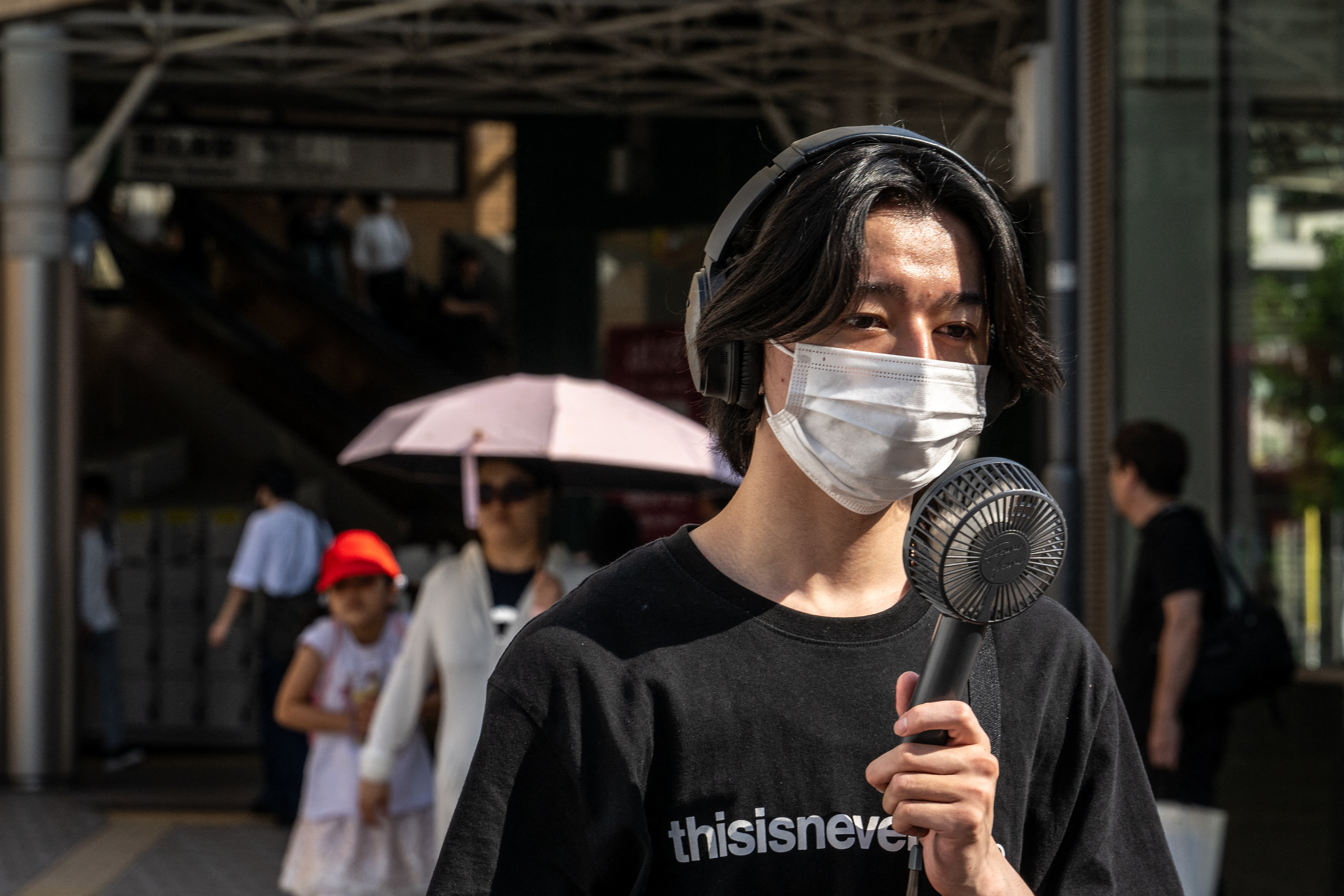
Tougher rules being enforced in Japan will see employers fined if they fail to take adequate precautions to protect workers from extreme temperatures.
The revised legislation, which came into effect June 1, is a rare global example of a national-level policy on heat safety for employees, and comes after 30 workplace deaths and roughly 1,200 injuries last year associated with high temperatures, according to health ministry data. Most of those affected worked in construction or manufacturing.
Japan’s government moved to strengthen protections following last summer’s searing heat — which included the highest July temperatures on record, the ministry said in a statement. Businesses will face potential penalties including fines of 500,000 yen ($3,475) if provisions aren’t sufficient.
ALSO READ: Japan continues to bake amid scorching heat wave
Heatstroke is a potentially life-threatening condition caused by dangerously high body temperature that can result in severe organ damage if not treated quickly. There were almost half a million heat-related deaths annually between 2000 and 2019, according to a report last year by the World Health Organization.
Along with public health impacts, higher temperatures can impact worker productivity and there’s growing concern about the economic toll that heat waves have on economies. Global average temperatures exceeded 1.5C degrees above pre-industrial levels for the first time in 2024 and new highs are forecast to be recorded over the next five years, according the World Meteorological Organization.
Japan’s legislation requires employers to implement protocols to quickly spot and aid workers showing symptoms of heatstroke. Policies encourage companies to use a buddy system at work sites, distribute wearable devices to monitor staff, and provide emergency transportation to hospitals or clinics.
Employers are urged to monitor the Wet Bulb Globe Temperature index, a gauge of heat stress in direct sunlight that takes into account factors like temperature and humidity. Specific measures are required for work sites where the index value exceeds 28C or an atmospheric temperature of 31C for more than one hour, or for a total of four hours or more in a single day.
READ MORE: Heatstroke alerts issued across Japan as mercury may hit 40 degrees
A worker performing moderate work intensity loses half of their work capacity at 33C to 34C (91F-93F), according to a 2019 study from the International Labor Organization. The same report estimated the economic impact of heat stress by 2030 at $2.4 trillion if greenhouse gas emissions aren’t cut.
“We are working on measures such as taking breaks according to the heat index and measuring internal body temperature using wearable devices,” said a spokesperson for Shimizu Corp., one of the nation’s largest general contractors, which employs more than 20,000 people. The company said it is constantly updating its heatstroke policies.
Parcel delivery service Yamato Transport Co plans to distribute 75,000 fan-equipped vests to workers, including those who use carts and bicycles to drop off packages. It’s also installing 3,000 wet bulb index measuring devices at business locations to better track working conditions. The measures are not in response to the new law, the company said.
Japan’s updated policy has “great potential to reduce the fatalities from exertional heatstroke," Yuri Hosokawa, an associate professor at Waseda University who studies the impact of heat on athletes, said in an email.
ALSO READ: Japan to experience record heat, extreme temperatures
California and Washington are among US states to have developed similar rules on worker protections, and the US Occupational Safety and Health Administration has proposed setting a federal standard. There were an average 40 recorded fatalities a year in the US related to environmental heat between 2011 and 2020, according to the Department of Labor.


